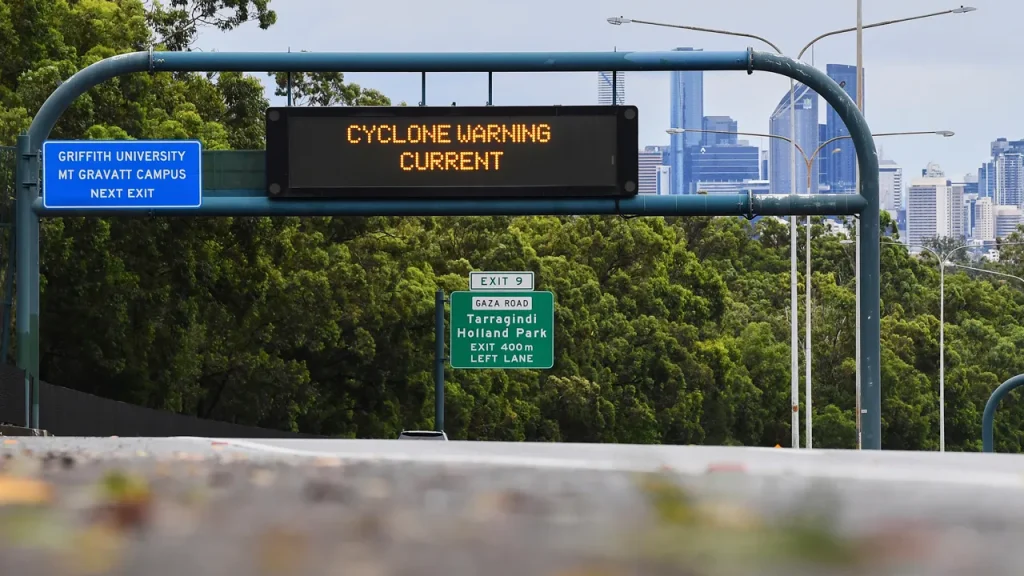A tropical cyclone dubbed Alfred has transitioned into a tropical low as it approached Brisbane, leading to significant flooding in the region. Although initial forecasts predicted that Cyclone Alfred would be the first cyclone to hit the eastern Australian coastline near Brisbane since 1974, its power diminished before landfall. This unforeseen development resulted in extensive rainfall across southeast Queensland and northeast New South Wales, contributing to rising water levels and evacuations in affected areas.
| Article Subheadings |
|---|
| 1) Overview of Cyclone Alfred |
| 2) The Impact on Brisbane and Surrounding Areas |
| 3) Emergency Responses and Evacuations |
| 4) Recovery Efforts and Challenges |
| 5) Future Weather Predictions for the Region |
Overview of Cyclone Alfred
Cyclone Alfred initially formed as a strong tropical cyclone off the coast of Queensland, Australia, displaying sustained winds of 59 mph, with gusts reaching up to 81 mph. The Australian Bureau of Meteorology, while monitoring the storm, highlighted that it was expected to become the first cyclone to strike near Brisbane since 1974. However, just before it made contact with land, Alfred weakened and transitioned into a tropical low with sustained winds dropping below 39 mph, which significantly reduced its destructive capabilities. Despite this downturn, the cyclone still posed severe risks due to forecasted heavy rainfall and coastal impacts.
The Impact on Brisbane and Surrounding Areas
As Cyclone Alfred traversed towards Brisbane, its effects on the coastal regions became evident. The city, known as Australia’s third-most populous, experienced intense rainfall that has led to considerable flooding. The Bureau’s reports indicated that rivers across both Queensland and New South Wales were swelling due to the continuous precipitation. By the end of the weekend, floodwaters had become a significant risk to local populations, prompting emergency alerts and advisories in multiple regions, including Brisbane and the surrounding suburbs. Significant disruption was also noted in the Gold Coast area, which reported extensive power outages affecting over 250,000 homes and businesses.
Emergency Responses and Evacuations
In response to the oncoming threat of tropical low conditions, officials activated emergency response protocols, including evacuations of residents from low-lying areas. More than 19,000 individuals were displaced from their homes, seeking safety from rising waters. Emergency services conducted numerous rescue operations, particularly in New South Wales, where reports indicated that 39 people had been saved from floodwaters. The state government mobilized resources to ensure the safety of unidentified individuals, continuing rescue efforts throughout the chaos of flooding. Indeed, authorities confirmed that a man went missing after being swept down a river amid the storm, highlighting the severe risks posed by the storm system.
Recovery Efforts and Challenges
Despite the storm weakening, the aftermath of Cyclone Alfred presents significant challenges for recovery in Brisbane and surrounding areas. With over 19,000 people evacuated and emergency services stretched thin, local governments face the daunting task of managing and coordinating relief efforts. Flooding rivers present a persistent threat to community safety and infrastructure, complicating recovery measures and the potential for restoring power to the region. Furthermore, officials have expressed concerns about the impact on local businesses and households in the long run, emphasizing the need for community resilience and support during this recovery phase.
Future Weather Predictions for the Region
As authorities monitor the situation following Cyclone Alfred, upcoming weather forecasts remain a topic of concern for residents and officials alike. Meteorologists are concerned that although the cyclone has weakened, continued heavy rainfall is anticipated in southeast Queensland and northeast New South Wales throughout the weekend. The Bureau of Meteorology warns of ongoing coastal surf impacts and advises residents to remain vigilant, particularly as recovery efforts commence. Ongoing monitoring will play a crucial role in ensuring that citizens are prepared for any additional weather threats that could emerge in the near future.
| No. | Key Points |
|---|---|
| 1 | Cyclone Alfred weakened to a tropical low before making landfall near Brisbane. |
| 2 | Heavy rain and flooding affected coastal regions and rivers in Queensland and New South Wales. |
| 3 | Over 19,000 individuals were evacuated from their homes as a precaution. |
| 4 | Emergency services rescued 39 individuals from floodwaters, with one person still missing. |
| 5 | Significant power outages were recorded, affecting over 250,000 homes and businesses. |
Summary
In conclusion, Cyclone Alfred’s transformation into a tropical low marked a significant weather event for southeastern Queensland, sparking substantial flooding and evacuations. While the storm’s impact was mitigated by its weakening, the aftermath of heavy rainfall brought new challenges in terms of recovery and safety for local residents. With emergency services actively engaged in response efforts, ongoing monitoring of weather forecasts will be critical to protect communities from further environmental threats.
Frequently Asked Questions
Question: What is a tropical cyclone?
A tropical cyclone is a rapidly rotating storm system characterized by a center of low atmospheric pressure, strong winds, and heavy rain, typically forming over warm ocean waters.
Question: How can residents prepare for severe weather events like cyclones?
Residents are encouraged to prepare emergency kits, stay informed about weather updates, and have evacuation plans in place to ensure safety during severe weather events.
Question: What should residents do during flooding?
During flooding, residents should avoid driving or walking through flooded areas, move to higher ground, and follow guidance from local authorities regarding evacuations and safety precautions.


